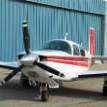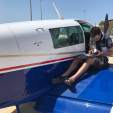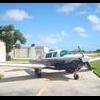Leaderboard
Popular Content
Showing content with the highest reputation on 05/20/2021 in all areas
-
First, thank you everyone for the very kind words for the PMA450B. It is the culmination of designing audio panels since 1995. One IMPORTANT point regarding the above post, "IntelliVox(R)" is our registered trademark and is licensed PATENTED technology from the USAF. It is NOT the same that is used in any GARMIN audio panels. Additionally, one of the short comings of the GMA345 (in my opinion) is it does not provide music distribution. (NOTE: there is a switch on the rear right side on the chassis that if you flip it, then passengers will always hear Music #2). The only selection of sources is the one that everyone hears (Music 1, Music 2, BT). ALL of our audio panels provide various music distributions. The PMA450B with dual Bluetooth(R) that takes the distribution to the next level. The pilot can select to hear both a hardwired XM (GDL69 maybe) music while also listening to BT2 that might be connected to an iPad providing audio alerts from Foreflight. The copilot might want to hook up their phone to BT1 and listen to Music 2, while the PAX can select to listened to any one of the four entertainment inputs. Music 1, Music 2, BT1, BT2 This might sound extreme but in actuality, it is not. How often have you wanted to hear audio alerts from your iPad AND listen the XM music at the same time? Each station (pilot, copilot, and all the passengers are treated as individual stations) can select their own volume level and muting settings as well. The most important point in this post is to alert everyone that IntelliAudio(R) is nothing like GARMIN's 3D audio, completely different implementations. For example, we do NOT make the passengers intercom audio "appear" to becoming from the back of your head. We figured you already know and recognize the voices of the folks in the back. We kept the intercom MONO. Additionally, it is my understanding the the copilot's intercom audio goes to the pilot's right ear. That might be a problem when COM 2 comes from the 2 O'clock position while the copilot intercom comes form the 3 O'clock position. IntelliAudio(R) places all intercom audio at he 12 O'clock position, much easier to ignore when trying to listen to COM 1 or COM 2. The PMA450B allows the pilot to place COM 1 and COM 2 in the 9 O'clock near, 9 O'clock, 10 O'clock, 11 O'clock, 12 O'clock, 1 O'clock, 2 O'clock, 3 O'clock, and 3 O'clock near. Thank you all for allowing me the opportunity to clear up some unintentional misinformation. For years, people thought we made GARMIN audio panels. We never did except after GARMIN purchased UPS-AT, they continued to purchase the UPS-AT SL-15 but that ended after a year. However, we are very appreciative that other avionics manufacturers purchase our audio panels either under the brand name or ours. - Mark Mark8 points
-
Fellow Canuck: Missed the one that characterises mine with Clarence. He puts up with me. He stays ahead of issues when he knows about them. He sometimes lets me help. He is the single most competent aircraft mechanic I know. He never, ever accepts second best. It is never about him making me feel good as a customer, it is always about him taking his responsibilities for our safety seriously. Always. Can’t buy that. Such approaches are not normally for sale. I could not ask for better.6 points
-
I have been writing software to run machines for 40 years. My last employer liked to write software with so many safety checks in it that it would fault and shut down at the slightest hiccup. The customers complained that it was the most unreliable machine ever made. I went in and changed most of the faults so they just logged the fault and kept on running. The reliability of the machine improved greatly. I think Garmin might have the same idea and going to great lengths to make sure that they never show data unless they can guarantee that it is perfect. If they can't, they don't show anything. As was discussed here, unreliable data is much better than no data at all. If I was the king of software at Garmin I would change it so if you lost some of the inputs, I would put a yellow X over the display with a message that the data is imperfect, but still show the best information I have. The message should say "Airspeed Error"4 points
-
They contacted me and asked for contact information. I provided it and am waiting. Initially I was going to allow the shop that installed it last year to deal with it but they're so far behind on work they're probably busy, although they share the concern.4 points
-
I just spoke to Garmin. They did seem to have a proper level of concern. They are going to arrange for me to bring my plane to a Garmin dealer and if they cannot arrange it he said they may fly someone out. They do want to look at configuration but honestly if a configuration issue can go unnoticed for a year and then cause this it should be an AD in my opinion.3 points
-
If it was software then every GI-275 on this software version would be having issues. I think you're right on an installation issue.3 points
-
There is no reason for AHRS to loose alignment due to loss of airspeed input. AHRS requires a speed input, but it can use GPS groundspeed as a backup. Garmin has always allowed this (it is internal to the G1000) and other displays as long as there is a GPS input. I suspect in this case that data was lost, and the question is why are the two displays not switching to GPS input with airspeed loss? It is one of three things. Wiring, configuration or software. Two are installation problems, the last is Garmin's.3 points
-
It is safe for me to ask the question because: 1) I am a fixed gear owner 2) With all that I have had done to my airplane and all the money that has been spent on it, no one could ever accuse me of being a CB. They could accuse me of being an overly sentimental, irrational financial knucklehead...but that is a different story.3 points
-
Thanks for letting us know, but... May I suggest letting the NTSB know? Ref NTSB 830, required reports. I'm serious.... this is more than a support ticket for someone who does elect to drink the punch and remove their vaccum system, thinking two of these devcies provides sufficient redundancy for safe instrument flight https://www.law.cornell.edu/cfr/text/49/830.5 (9) A complete loss of information, excluding flickering, from more than 50 percent of an aircraft's cockpit displays known as: (i) Electronic Flight Instrument System (EFIS) displays; (ii) Engine Indication and Crew Alerting System (EICAS) displays; (iii) Electronic Centralized Aircraft Monitor (ECAM) displays; or (iv) Other displays of this type, which generally include a primary flight display (PFD), primary navigation display (PND), and other integrated displays;3 points
-
I am closing on the purchase of the maintenance shop at me home field at KPIB June 1st. So I guess I'll have myself to blame if I'm dissatisfied with the service I receive. Alex3 points
-
Just to add to what @gsxrpilotsaid. Warn pads won't let the puck out enough to leak, but the cylinders get corroded outside of the o-ring. Once the o-ring gets to the corroded part of the cylinder the fluid leaks out.3 points
-
3 points
-
I am my A&P/IA/Avionics guy/oil changer/aircraft cleaner/fueler. So yes...me, myself and I have a pretty amazing relationship. Not sure how good of advice I give myself though. There was this one time back in the 80s when I told myself "That girl is beautiful", you should go buy her a drink! Woke up the next morning and was pretty disappointed with that advice....3 points
-
Not much to add beyond what's already been said. I never thought an audio panel would make much difference in the cockpit. After all, the audio quality is a function of headsets, or so I thought. Then on a whim and a Black Friday sale at @Avionics Source, I bought a PMA450a and later traded it for a PMA450b. It is the single biggest improvement in my cockpit. Not only is it a top quality unit, but it's nice to know I can ask for service and get it, if needed. Garmin makes good stuff, but they won't give you same level of support at @jcovington describes above. They'll tell you to take it back to your installer. For those of us who are pretty good with our hands and somewhat technically savvy, being able to talk with the guys who build the kit, is a game changer. I had a GMA340 prior and did the swap myself. It took longer to open the box than it did to switch out the units. Just some of the things I like: Noise suppression is amazing. In my all electric airplane and two alternators, the PMA450 just took all the electronic noise away. Music distribution and selective muting makes it my wife's favorite cockpit tech. Easier to get funding that way as well. Bluetooth works and works perfectly. I took a call on my phone once while on the take off roll, full power. The guy I was talking to thought I was sitting in my office at home. IntelliAudio - I'm always either on flight following or IFR. There's no need to ask to step away to get weather, or flight service. Its easy to listen to two channels at the same time. @Avionics Source just made it too easy to buy, and @Mscheuer made it too easy to install and use. What's not to like?3 points
-
Just put it into the cloud, that should fix it. I am still questioning the Colonial Pipeline mess if they had their control systems done right there should be no way to compromise Control on Operations. For the business systems I would have just tossed the business computers and bought new before I paid ransom.2 points
-
In fact an immediate benefit of form flying is getting lots of great pics of your bird. But one doesn’t have to fly with the Caravan to OSH to try form flying. In fact, most people who regularly fly form locally do not get to the OSH flight. A clinic is just one way to try it. Find some qualified formators (Caravan, B2Osh, credentialed FFI, FAST, etc.) near you and work out a flight with them. PM me or look on the Caravan site for resources, or contact a leader of one of the organizations in your area. It’s a lot of fun and addictive. The form community is welcoming and offers robust camaraderie as well. And it’s essential for aerial photography, as you point out.2 points
-
Do a search on AV-20 and 30 here so you understand some potential pitfalls there as well.2 points
-
Garmin's whole ad campaign shows replacing an entire panel with two gi-275's. No airspeed, turn coordinator, altitude etc.2 points
-
Then that should be in big red print on the box when you buy a GI-275. "Warning pitot failure will result in death". I paid good money for two GI-275's under the impression it provided redundancy.2 points
-
The automatic flip up cover failed and stayed closed.2 points
-
This is a great poll. As an A&P I am very glad that almost 70% feel that have a good or amazing relationship with the guy or gal they trust to work on their aircraft. That really is fantastic. I have been a pilot and mechanic for over 35 years now with most of that being on the airline side of things. For the last few years, I have been maintaining GA aircraft (DOM/Accountable Manager for a 145 RS maintaining a fleet of 46 flight school aircraft and doing outside customer work) and it really is a different world (same...but different) than the airlines. An airline mechanic is only concerned with fixing the aircraft and getting it RTS. A GA mechanic is also worried about that but also has to put his small business owner hat on and provide customer service.2 points
-
We finally got the alternator out last night. What a major pain in the ****. Going to be contacting the folks that installed the coupling - my guess is that it wasn't torqued correctly? Placed an order with AeroTech in Louisville for OH alternator and new (surplus) coupling. N252XM-AlternatorFailure.mp42 points
-
My old stomping grounds. Great memories Thread drift...... one of my very favorite movies.... 16 Right.2 points
-
When I did the major work on my center stack a couple of years ago, it was just after Sun-n-Fun where the 450B was introduced. I came home and had my avionics shop order one. They were still in the process of manufacturing the first batch, so I think I may have one of the earliest ones produced. It has never given any problem, and it has been the one the more rock solid piece of avionics gear I have purchased. Given the opportunity to do it again, I would do so in a heartbeat.2 points
-
You can fly like it’s 1960... without proper seat belts... Or... when able... Add the things that make sense for you... There are plenty of advantages to having instruments... My M20C sufffered from having too few... Having carb temp sensor would have solved one inflight problem I had... Having four EGTs instead of one would have solved another flight problem I had... Having four CHTs would have helped me manage the engine better than what I did for a decade... If I had an engine monitor...my engine would have lasted longer.... and cost less to operate... I would bet... an engine monitor can pay for itself over a decade of use... Most often, long before the decade is out.... Every run-up can be more meaningful if you look at the data... My stuck valve would have been caught, long before it jammed, extended into the cylinder... Flying with a bent valve would have been more visible with an engine monitor.... that’s a flight I would like to have known not to take... The stuck valve loosened itself up after it got damaged... everything seemed right again... So... If you want an engine monitor... there are plenty of ways to get one lately... pre-flown makes an excellent low cost opportunity... If you don’t want one... that’s OK too... But, definitely get the updated seat belts.... Its not 1960 anymore... we are not stuck in the old millennium... if we don’t want to be. There are always going to be financial challenges...and priorities... PP thoughts only... Best regards, -a-2 points
-
Sorry guys but most of you are wrong on the "FLARES" They were used to light up the sky and the airport at night for a night landing at an un-lighted airport (which most airports were 70 years ago) much like the military does when the fire night time parachute FLARES to light up a battle field at night. You flew over the airport at about a 1000-1500 ft (IIRC) and dropped a FLARE After which you had about 2-3 minutes of light to land by (you had 3 chances to succeed ! Regular everyday pilots were good at it back in the day. Now, today. if we don't have a full ILS system with ALS III lighting and touch down zone lights and a PAPI we get "scared" to land there at night. Night flying even back in the early 60s was a lot different than it is today. Obviously one didn't fly a Boeing 747 pattern like many do today and go 4 miles down wind. I can fly a 737 inside most of the Cessna and Mooney patterns I see today around untowered airports. What ever happened to "keep it in close"?2 points
-
See if you can keep the system from emptying itself.... There may be less air to get out of the system later... PP thoughts only, not a mechanic... Best regards, -a-2 points
-
Oye - I hate to see that. I just had a pair of GI275's installed and I ditched the vacuum gauge - but I did keep my mechanical lifesaver attitude indicator.2 points
-
2 points
-
I said it was polyester, but I meant polyurethane. https://www.meggitt.com/insights/discover-our-leak-proof-long-life-sealant/2 points
-
An experienced painter can blend either. What becomes difficult is trying to blend old worn sun-faded paint, etc. To do good blends you need to know the tricks that come from years of doing them. I Agree with @A64Pilot above regarding Sherwin Williams Jet-Glo is a good paint. As is Axalta. Also agree that PPG is cheaper and not as good, but an experienced painter can use it. We mostly spray Axalta which used to be DuPont. But we will spray Sherwin, PPG, Akzo Nobel if required by a specific fleet customer that has a whole fleet of one kind of paint, etc.. We never spray automotive on aircraft.2 points
-
So, Paul is right that the solution is to put the settings back where they were, but it is a little different in the 231 than in the 252. The 252 has a fully automatic controller, so if you set MP at a number, let’s say at Paul’s 25”, then you can enrich or lean the mixture with the fuel knob and the wastegate controller will work hard to maintain 25”. That is not what happens in the 231. There is an interlink between the MP and the fuel flow in the 231, and the wastegate controller does not hold a set MP. What the interlink does, is to try to maintain a given fuel/air ratio once you have made your power setting. So if you set the power at 25” and 9.5 GPH, and then you increase the MP to 32”, the fuel flow will rise with it to try to keep the same fuel air ratio you had at 25/9.5. The relationship is a little weaker fuel flow drifts for some reason, the interlink is still there but it does not appear to me that the MP will change if fuel flow drifts, as much as the fuel flow will change if MP drifts. So what you need to do is to make sure both the fuel flow and the MP go back where they were. In my plane, if the MP drifts it is usually good enough to just put the MP back where it was and the fuel flow will normally go with it. If the fuel flow drifts and the MP has not moved, or not moved very much, then put the fuel flow back where it was, but always aim to keep both fuel flow and MP at the initial settings that you found. I haven’t used either the lean of peak or the rich of peak function in the JPI for years. The lean of peak function, in particular, is very inaccurate. What it tries to do, is identify the last cylinder to peak as you pull the mixture from a rich of peak power setting, across peak, to a lean of peak setting. The problem in the 231 is that MP is moving with the fuel flow when you do that, so what you are doing is not leaning the mixture out but rather just reducing the power setting that you started with. The JPI will report a peak, but too much changing is going on, that peak is just not valid. I found a setting that I know is around 20 degrees lean of peak and keeps the TIT at or under 1600. I just use that setting. It works.2 points
-
You just made his point about 2020 not being a representative year . . . .2 points
-
2 points
-
As an outside observer, it would be difficult to assess anything except what’s posted here. So that’s understandable. Posting to social media is not a viable safety management strategy. The Caravan has implemented significant additional internal processes and safeguards to enhance safety at future events, not just the mass arrival flight. Participants are using them now, and future participants will be aware of them. In addition we have a specific presentation “Ruminations of a Midair Survivor” that has been presented at clinics. It is a detailed analysis using the Reason model and NTSB methodology as well as group discussion that has been well-received. If you’re at OSH, look for it. It’ll be presented there and announced here too. And for those who are interested, come out and fly with us.2 points
-
Yes, we should all be careful and not gear up our airplanes. But the reason being that it might increase everyone else's insurance rates a few dollars... is so far down the list of reasons that it's a complete waste of an otherwise good brain cell to even think about it. #firstworldproblems2 points
-
This is not an insightful statement. Shared risk is the bedrock of all insurance. I see this sort of complaint a lot: auto insurance, health insurance, whatever. I'm safer/smarter/healthier than the other guy, so why should I pay for the cost of their poor decisions? Shouldn't insurance companies separate the insurable pools into "good guys" and "bad guys", giving the former generous discounts while appropriately punishing the latter for their poor behavior? After all, those guys were accidents waiting to happen due to their poor habits/practices, whereas I would only use insurance in some incredibly rare, unforeseen situation that wasn't at all my fault. I think this attitude is counterproductive, but if you disagree, take action! Set up an insurance pool with exactly one member: yourself. Stop paying some third party for hull insurance, it's still 100% legal to do so. Take the premiums you would have otherwise spent, and put them in the bank. You can draw on those funds in the event of an act-of-god-that-was-totally-not-your-fault. Since such a thing is obviously an incredibly rare event, you'll almost certainly have plenty of money in the bank if it ever occurs. And if it doesn't, you keep all your money, with none of it going to those scofflaws who are ruining the insurance system.2 points
-
I have a full set of belly skins , I have new , and used gear doors , and plenty of flap hinges , and fairings , flaps too , if you need them... Insurance will base a total off of a 30% return on salvage , Meaning that if the plane is insured for 58000 , they will write a check for up to 40600.00 Your plane is not totaled...12 K for a teardown , 12 k for a prop , 12 k for labor , and belly repairs ... You should be way under total , If by some miracle , you come in over 40.6 K , you can have them buy out their liability for the 40.6 K and be on your own... An old C will never bring 18 K at salvage auction , plus there are costs of storage , and transport , that the insurance will want to get out of.... I do this for a living , Just sit back , and see where you are at , If you get Close , People like me and Jerry , can supply the parts cheap enough , to save it ... Good luck.. Also if you don't buy it back , at auction , I just might buy from the insurance auction , and rebuild it ...2 points
-
It’s been a while since last post, but the issue is finally resolved. After dealing with this for a year and trying all the suggestions I received, I finally gave up and called JPI. They had me send the the MP transducer and lo and behold it was defective. They sent me a new one, got it installed....no more fluctuations. Main reason I followed up with this post is just to say that at times parts are just bad.....you do nothing wrong, installation was correct, your plane is responding correctly. Now to fix the freezing/locking up of the 7” G3X.2 points
-
Prop comes back tomorrow! Crank plug looks fine and no sludge built up in the shaft area. The IRAN'd governor was pressure tested before install and is putting out the correct pressure. Waiting to find out what Byam's found on the prop - hoping to test it out ASAP. -Don1 point
-
LOL! I showed my doc the Guide for AME explanation of that one. A physician can base the answer on medical history rather than a physical exam. She was even happier than me. I always felt it was my job as someone who knows aviation to assist my doc who does not with the requirements.1 point
-
Sorry, was looking for reasoned discourse. Wrong room, sorry to have troubled you.1 point
-
An update, I have been working on flushing the tanks and lines. After three flush cycles I am no longer getting particulate out of the sump or seeing anything in the 5 Micron filter that I am running the fuel I have been using to flush the tanks. I recoat is still very likely in my future, I am not a fan of leaving things without a definite resolution. However, to confirm I am not getting particulate in the fuel I need to fly it again as the only time I was seeing the particulate was in post flight.1 point
-
1 point
-
A very experienced MSC mentioned the "mooney rumble".....i sometimes hear something but no indication on flight instruments, controls or engine gauges....i just shrug and go on.1 point
-
On the ground once you are done recycling prop, do you get any of those vibrations when you keep recycling very slowly from fine pitch to higher pitch? is it smooth? or it also vibrates? - If yes, probably one of blades is slightly behind when prop pitch changes (picture above is worth 1000 words) - If no, it's probably prop balancing or random vibration on specific regimes Power/RPM/ASI If the latter you can check on various climb & level off speeds or RPM/ASI If greasing & balancing does not sort it, it will take a while to debug...1 point
-
I'll put this to an end... Xtrmedia, if you want to drive down to my home drome, I'll take you for a ride. PM me to setup a date.1 point
-
1 point
-
I still have a newish GMA340 that I’m happy with, but I’m planning to go the gsxr route and swap it out myself for a PMA450 one of these days. The charging ports and 3D audio seem valuable enough, and the Telligence feature on the 350 still seems too gimmicky for me. This is from someone who is otherwise an all-Garmin buyer, fwiw.1 point
-
I've been associated with Mooneys for a few years, like 27 years of ownership of my Bravo with another 2 years before that of decision making. I'm on my 3rd engine right now. I've been through a complete panel upgrade, starting in 2013 and adding new things up to the present. When it comes to engines, the price increases about 5% each year. Count on it. If you have time to spare in your life, cash in your pocket to spend, and want your dream airplane, then buy a Bravo with both a run out engine and original avionics. You might be able to find one for $95,000. A new reman installed, as mentioned above is close to $85,000. Your dream all Garmin panel with G500 TXi including EIS, GTS 800, GTX 345, GDL 69A, GMA 35c, G5, GTN 750, GTN 650, FS 510, and GFC 500 costs about $130,000 installed. So you would have 95,000 + 85,000 + 130,000 = $310,000 in the plane. Add $12,000 for tank reseal, $15,000 for exterior paint and 15,000 for new interior and you end up with $337,000 for an almost new airplane. This is less than half of the cost of a new Acclaim for a plane that is only about 25 knots slower. The downside is that the new engine will take over 2 months to make and other 1 month to R&R. And unless you have the Avionics shop on the same field as the MSC, add at least another 4 months for the avionics upgrade and another 2 for the tank reseal and paint and interior. That's 2 + 1 + 4 +2 = 9 months. Then add another 3 for delays. So the plane will be down for a year. The upside is that you will have an almost new airplane for less than half the cost of a new one. Then, of course, you could decide to buy a Bravo with a run out engine and a somewhat upgraded panel. The upgraded panel would probably consist of at least an Aspen, GTN 750, KX155, and GTX 345. The plane could probably be purchased for $135,000. Add the new engine for $85,000 and you are in it for $220,000, you're down for 3 months, you hope the tanks don't leak, and can live with the old paint and interior. You don't have the dream airplane, but you've bought the avionics at a discount, you don't have as long downtime, and you still have the speed of the Bravo. Also, remember airplanes are not inexpensive to own, so expect it to cost at least $30,000 per year to own for about 100 hours of flying per year. It's expensive, but at least not the annual cost of maintenance on a small turbine prop plane or small jet, and you're not that much slower.1 point





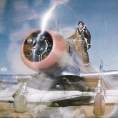


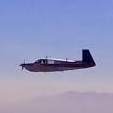
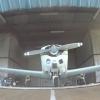
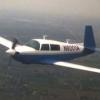
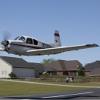
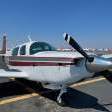

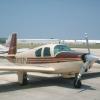



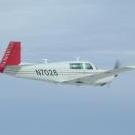

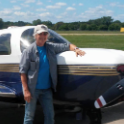
.thumb.jpg.44bc5ad17b44ec09b48bdca2a82f7a76.jpg)
